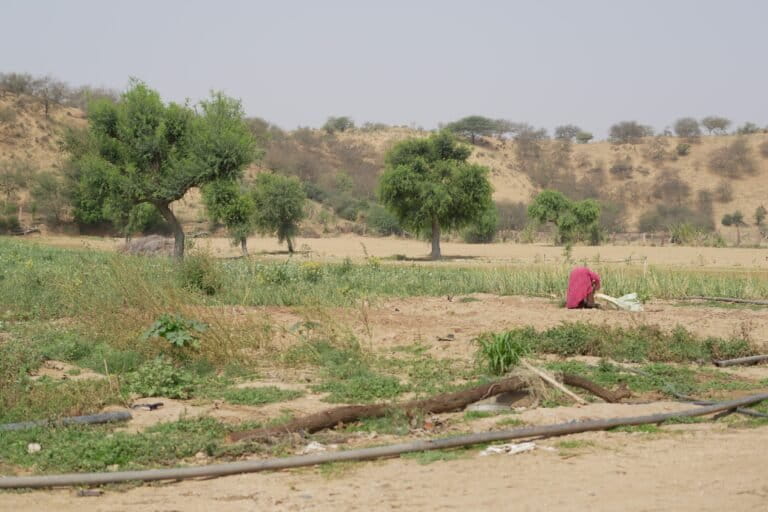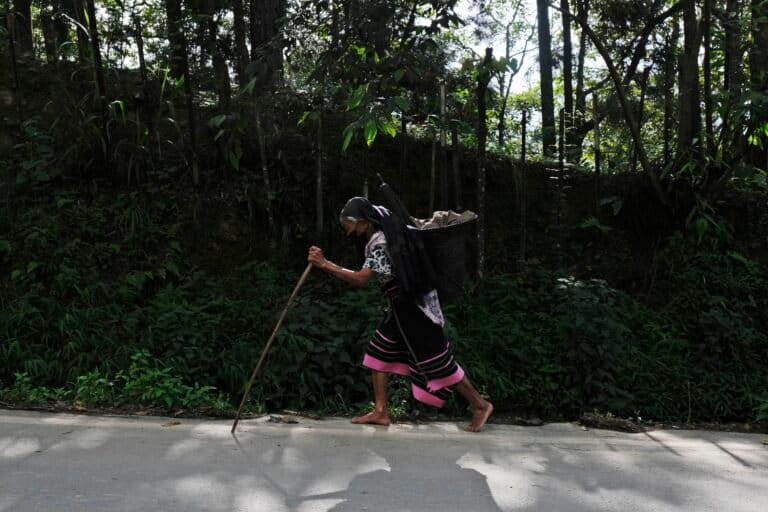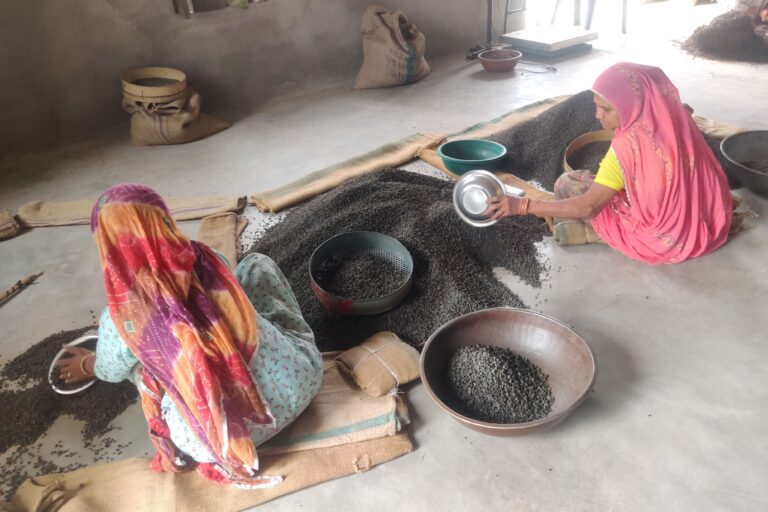- A new study finds that two colonies of critically endangered white-rumped vultures (Gyps bengalensis) in Nepal have maintained stable numbers for more than a decade, despite the diclofenac poisoning crisis and other threats.
- The study coincides with the launch of Nepal’s new Vulture Conservation Action Plan (2023-2027), which aims to restore and protect the country’s nine vulture species, eight of which are threatened or near-threatened.
- The action plan identifies nonsteroidal anti-inflammatory drugs (NSAIDs), electrocution, poisoning, habitat degradation and disturbances as the main challenges for vulture conservation in Nepal, and it proposes various measures to address them.
- The study also raises questions about why the vulture population has not increased and suggests that more research is needed to understand the factors limiting their growth.
In Nepal, the lower mountains are covered by chir pine trees (Pinus roxburghii). On a bright morning, a pair of white-rumped vultures (Gyps bengalensis) can be seen building a nest among the green needles and brown cones of a tree.
They choose a sturdy trunk, high enough to avoid predators and low enough to catch the warm breeze. They collect twigs and branches and weave them into a platform; they add some feathers and grass to make the floor of the nest comfortable for their egg, which will hatch into a chick—after all, vultures are known to lay only one egg every year.

The two individuals of the now critically endangered species, which was once known as the world’s most abundant large bird of prey, are not alone. Around two dozen vulture pairs also nest nearby.
A new study documenting the two colonies located in the Arghakhanchi district published only a few days ahead of International Vulture Awareness Day (Sept. 3) and on the heels of the launch of Nepal’s new Vulture Conservation Action Plan (2023-2027) has found that the numbers of vulture nests, chicks and chicks per nest in the colonies haven’t changed much in the last decade.
The findings come as a respite for conservationists as South Asian vultures recover from the “diclofenac crisis” (in which the birds died from feeding on the carcasses of cattle that had been given the painkiller diclofenac) but continue to face new threats, as presented in the new action plan. “We feel encouraged by the stable population numbers exhibited by the two colonies for over a decade,” said Krishna Prasad Bhusal, lead author of the study published in the Journal of Raptor Research.

Nepal is home to nine vulture species, eight of which are threatened or near-threatened, according to IUCN Red List criteria: The white-rumped vulture, slender-billed vulture (G. tenuirostris), red-headed vulture (Sarcogyps calvus) and Indian vulture (G. indicus) are listed as critically endangered; the Egyptian vulture (Neophron percnopterus) is endangered; and the bearded vulture (Gypaetus barbatus), cinereous vulture (Aegypius monachus) and Himalayan griffon (G. himalayensis) are near-threatened. The ninth species, the Eurasian griffon (G. fulvus), which visits the country during the winter, is considered a species of least concern.
“Our organisation has been regularly monitoring vulture nests and colonies across the country,” said Ankit Bilash Joshi, manager at the NGO Bird Conservation Nepal. “We have documented only around 620 white-rumped vulture nests across the country, out of which 25 were found in the Argha region,” he told Mongabay.
The numbers were quite unimaginable back in the 1980s when Nepal was home to millions of vultures. But following the South Asia vulture crisis of the 1990s, when vultures in the region died in the diclofenac crisis, their number has declined to around 20,000.
When an animal treated with the painkiller died, vultures fed on the carcass, ingesting the medicine, which remained in the body of cattle for up to a week. The drug spikes uric acid levels in the blood and develops visceral gout in vultures, which prevents the kidney from filtering uric acid and kills the bird. A carcass contaminated with diclofenac can kill around 350-800 individuals at one go.

In response to the diclofenac crisis, Nepal banned the use of the drug in 2006, promoted the vulture-safe drug meloxicam as an alternative and initiated the pioneering idea of working with local communities to establish vulture safe zones. As a result, the population of vultures, especially the critically endangered ones, are believed to be in partial recovery, according to highway transect surveys.
“The Argha study provides a glimmer of hope that a population recovery of vultures is going on in Nepal,” said raptors researcher Tulsi Subedi, who wasn’t involved in the study. “However, it would be too early to confirm that it is happening all over the country,” he added.
Following the development, Nepal’s authorities now plan to continue to restore and maintain a viable wild population of vultures in Nepal by providing them safe food and habitat in accordance with the new action plan.
But it, too, anticipates a range of challenges. According to the action plan, market surveys of nonsteroidal anti-inflammatory drugs (NSAIDs) show that diclofenac is completely absent in veterinary pharmacies, where sales of meloxicam, tolfenamic acid (the vulture-safe alternatives to diclofenac) have increased. However, NSAIDs other than diclofenac such as nimesulide, ketoprofen, flunixin and aceclofenac, proven to be toxic for vultures, have been reported in the market.
“NSAIDs remain the number one killer of vultures in Nepal,” said Joshi, a member of the technical team behind the action plan.
Similarly, direct or indirect persecution by humans or poisoning of domestic cattle, electrocution, habitat degradation and disturbances caused by mining already have negative consequences for vultures, according to the plan.
Subedi noted that while officials indeed need to pay attention to NSAIDs, electrocution of vultures and their deaths resulting from the poisoning of different carnivores should also be taken seriously. “I think the action plan is a bit limited when it comes to addressing the challenge,” he told Mongabay.
Back in Argha, the findings led Bhusal and his team to ask why the population couldn’t actually increase. “There’s a new road being built through the area,” said Bhusal.
The authors of the study note that the location of the colonies outside protected areas and logging, which may disturb the vultures, act as limiting factors for population growth.
Subedi said the next step would be to carry out similar studies in more nests and draw conclusions that could be applicable to more nesting sites.
Read more: How a village in Maharashtra is helping vultures make a big comeback
CITATION:
Bhusal, K. P., Joshi, A. B., Rana, D. B., Thakuri, D. C., & McClure, C. J. (2023). Population and productivity of the critically endangered white-rumped vulture (gyps bengalensis) in the argha important bird and Biodiversity Area, Nepal. Journal of Raptor Research, 57(3).doi:10.3356/jrr-22-61
This article was first published on Mongabay.com.
Banner image: White-rumped vultures congregrated in Nawalpur, Nepal. Photo by Abhaya Raj Joshi/Mongabay.













